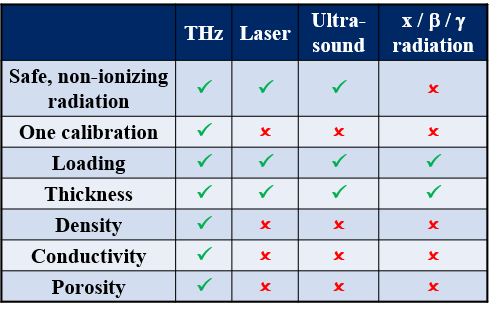
Terahertz Battery Electrode Inspection System
A revolutionized non-contact sensor for measuring coating film thickness, density, load & conductivity of anode & cathode with scanning capability.
Our battery testing solution (BTS 3500), incorporated with advanced terahertz (THz) sensor technology which allows optimization of the battery electrode manufacturing process by non-destructive, non-contact & real-time measurement of coating thickness, density, loading and conductivity.
The coating porosity can also be included, all in one THz sensor. The technique operates as a high frequency pulsed radar system at terahertz frequencies, where time of flight is converted into key electrode parameters.
The solution allows measurement of both single/double sides, anode & cathode electrode consistency & quality, enable customers to assess the quality of battery electrode coatings and detect any deviations in manufacturing.
The terahertz sensor is capable of delivering both point measurements in a laboratory application or ‘streaming’ data in a production environment. Based on proprietary technology, the sensor represents a significant leap beyond the current method of measurement for quality and process control in the battery industry.
Features
- Works with both anode & cathodes.
- Non-contact, no marking or damage to coating material.
- High accuracy reporting of multiple parameters. THz allows measurement of coating thickness, density & conductivity & porosity
- Calibrate once only. After initial calibration no further calibration required.
- Single-or-dual sided sensor options.
- Buried defect detection. THz can detect cracks, delamination and contamination.
- Industrialized form factor; designed for battery manufacturing industry.
- Non-interpretive; automatic parameter calculation without operator input.
- Suitable for both laboratory or production.
- Can be integrated with plant IT systems via network communications.
Comparison of THz technology and current existing technologies for battery electrode inspection

(1) x/β/γ radiation, these sensors measure coating weight and calculate thickness from estimated density. It has slow response time due to the need to integrate over long timescales to collect accurate signals. It also has safety issue of ionized radiation.
(2) IR laser triangulation, these sensors are difficult to implement with opaque coatings and frequently require calibration.
(3) Ultrasound, it measure coating weight and calculate thickness from estimated density.



